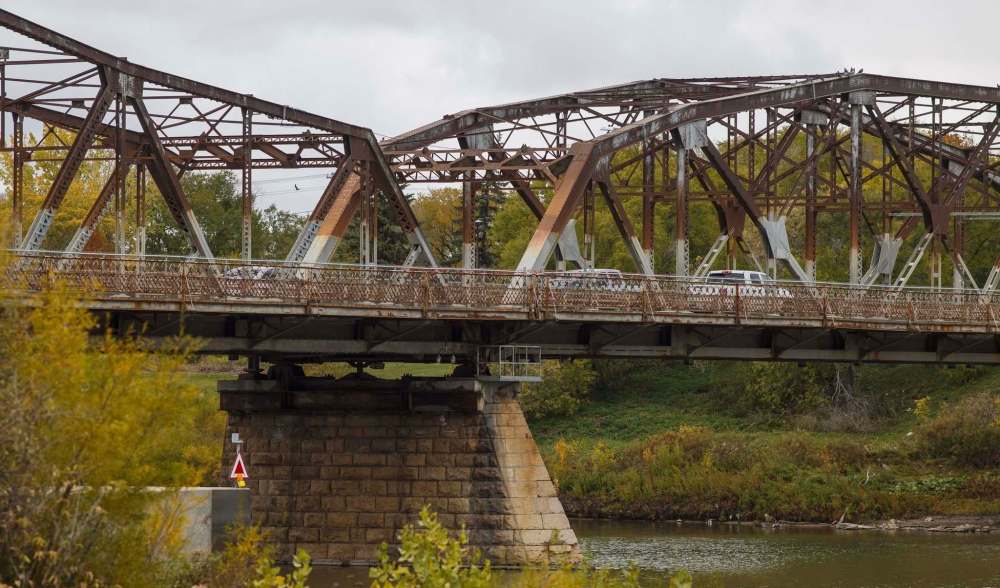‘It’s like a never-ending zombie debt’
Elmwood resident raises pertinent questions on city’s infrastructure, financial management plan
Advertisement
Read this article for free:
or
Already have an account? Log in here »
To continue reading, please subscribe:
Monthly Digital Subscription
$0 for the first 4 weeks*
- Enjoy unlimited reading on winnipegfreepress.com
- Read the E-Edition, our digital replica newspaper
- Access News Break, our award-winning app
- Play interactive puzzles
*No charge for 4 weeks then price increases to the regular rate of $19.00 plus GST every four weeks. Offer available to new and qualified returning subscribers only. Cancel any time.
Monthly Digital Subscription
$4.75/week*
- Enjoy unlimited reading on winnipegfreepress.com
- Read the E-Edition, our digital replica newspaper
- Access News Break, our award-winning app
- Play interactive puzzles
*Billed as $19 plus GST every four weeks. Cancel any time.
To continue reading, please subscribe:
Add Free Press access to your Brandon Sun subscription for only an additional
$1 for the first 4 weeks*
*Your next subscription payment will increase by $1.00 and you will be charged $16.99 plus GST for four weeks. After four weeks, your payment will increase to $23.99 plus GST every four weeks.
Read unlimited articles for free today:
or
Already have an account? Log in here »
Hey there, time traveller!
This article was published 28/10/2019 (2242 days ago), so information in it may no longer be current.
Amid all the self-congratulations from council members at their meeting on Thursday, there was a presentation from an Elmwood resident that essentially asked: ‘Hello, is anyone paying attention?’
Michel Durand-Wood was one of about 20 people who addressed the council meeting. The day was pre-occupied with debates on the benefits and shortcomings of the low-income bus pass and condemnation of Quebec’s Bill 21, his issue looked at debt and infrastructure and the city’s financial management plan.
Durand-Wood pointed out it appears city hall is so obsessed with building new bridges and roads that it makes no provisions to replace its aging infrastructure.

Durand-Wood’s critique could be dismissed as the rant of a self-described nerd, except he raised his issue the day after the 107-year-old Arlington Bridge was closed, again, this time for 13 days for inspections and repairs.
During the last two weeks, successive committees of council had endorsed the latest edition of the administration’s financial management plan. Durand-Wood was astounded that no one on the mayor’s executive policy committee had bothered to ask the administration a single question about it.
“We’ve had a financial management plan in place since 1995 and this is now the third time we’ll have renewed it. Yet despite that, our financial position has continued to worsen. We never have enough money. Debt is increasing. Budgets keep calling for more and more ‘hard choices,’” Durand-Wood told council. “Clearly there’s something we’re missing. And discovering what that is can start with a single question.”
Durand-Wood said the latest edition of the financial management plan boasted that the city’s assessment base had increased in value 58 per cent from 2011 to 2017. But, he said, the plan left out the fact the city’s debt during that time had doubled and will almost triple within another three years.
Still worse, he said, was that while the plan boasted about infrastructure spending, it made no link between never-ending debt and infrastructure, and how much new assessment dollars will be generated with each infrastructure project.
“Infrastructure is like debt, except a lot worse. When debt comes to the end of its term, we pay it, and that’s the end of it. When infrastructure comes to the end of its life, we pay to replace it, and then the clock just resets and starts over again. It’s like a never-ending zombie debt.
“And yet, we haven’t ever bothered to calculate the maximum amount of zombies our assessment base can handle. Seems like a massive blind spot in our financial management plan.”
The city is building new infrastructure without planning how to pay to replace existing infrastructure.
“Would we spend a trillion dollars to build infrastructure if it only grew our assessment base by a single dollar? Of course not. So, if $1 trillion-to-$1 isn’t it, then what Is the ideal ratio for new infrastructure? Because remember, the new infrastructure should create enough new tax value not only to provide services to those new areas, but also to replace itself, continually, forever.”
There is no money for a new Arlington Bridge, which the latest consultant report estimates will cost $300 million. But there was $48 million for a Kenaston Boulevard underpass 10 years ago and $98 million for the recently completed Waverley Street underpass, and, $598 million for the southwest transit corridor (now revised downward to $420 million).

The 108-year-old Louise Bridge also needs to be replaced and where will the money come for that? Or the $1.8-billion for the North End sewage treatment plant; the $1-billion-plus to separate underground storm drainage and sewer lines. What about the Chief Peguis Trail extension? The twinning of Kenaston Boulevard? The replacement of the St. James Street bridges?
“So here’s my question,” Durand-Wood put to council. “What is the maximum dollar amount of infrastructure our assessment base can reasonably be expected to pay to replace? We have nothing to lose in asking, and everything to gain. So just ask.”
Durand-Wood writes a regular blog on infrastructure and debt (no explanation is provided as to what kind of upbringing led him to such a pastime) and a written version of his Thursday presentation can be found at: http://wfp.to/dkw
The blog can be found at dearwinnipeg.com
A video of his Thursday presentation to council (fast forward to the 1:38:50 mark) can be found at: http://wfp.to/dkr
aldo.santin@freepress.mb.ca
History
Updated on Monday, October 28, 2019 8:40 AM CDT: Adds link, fixes typo


